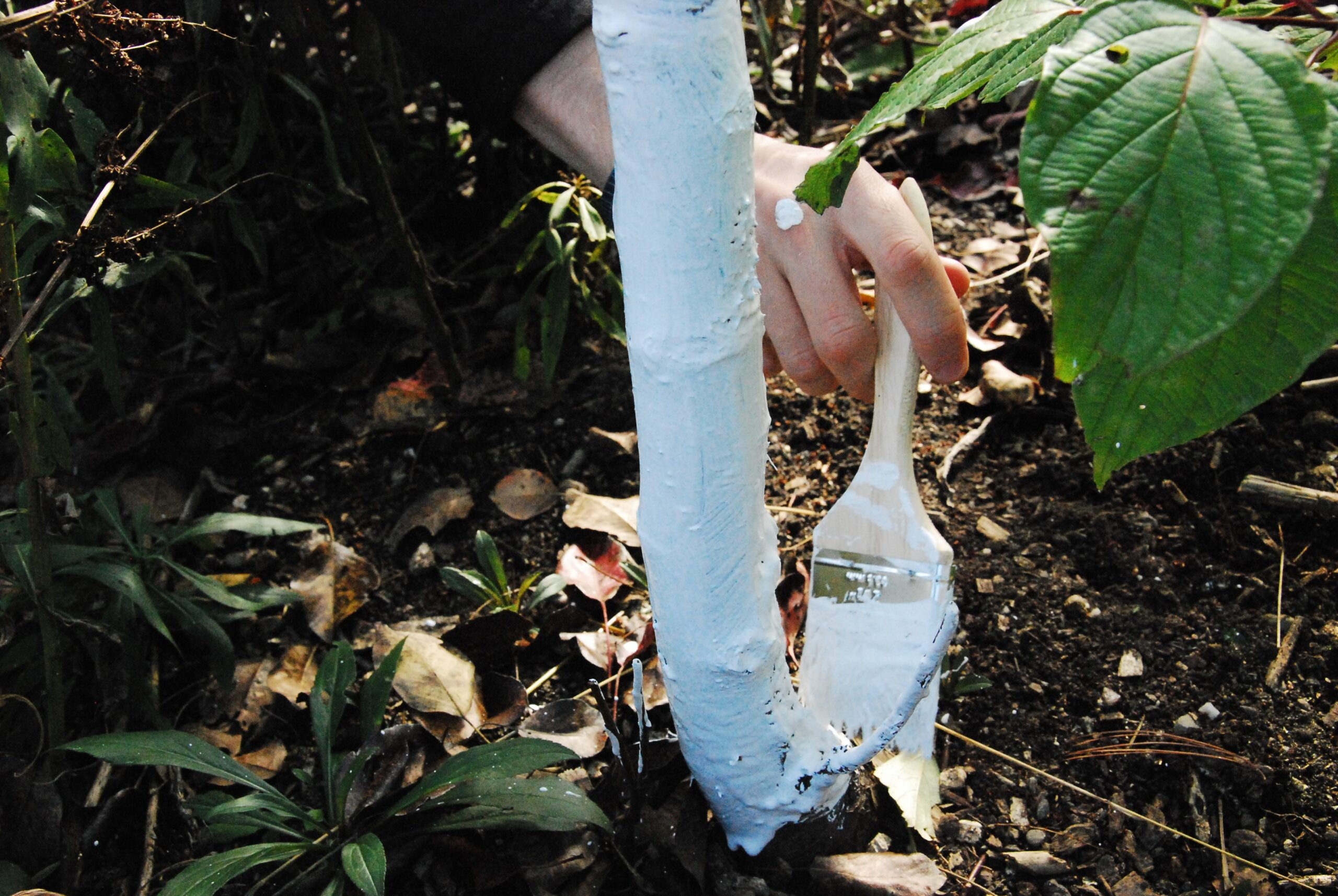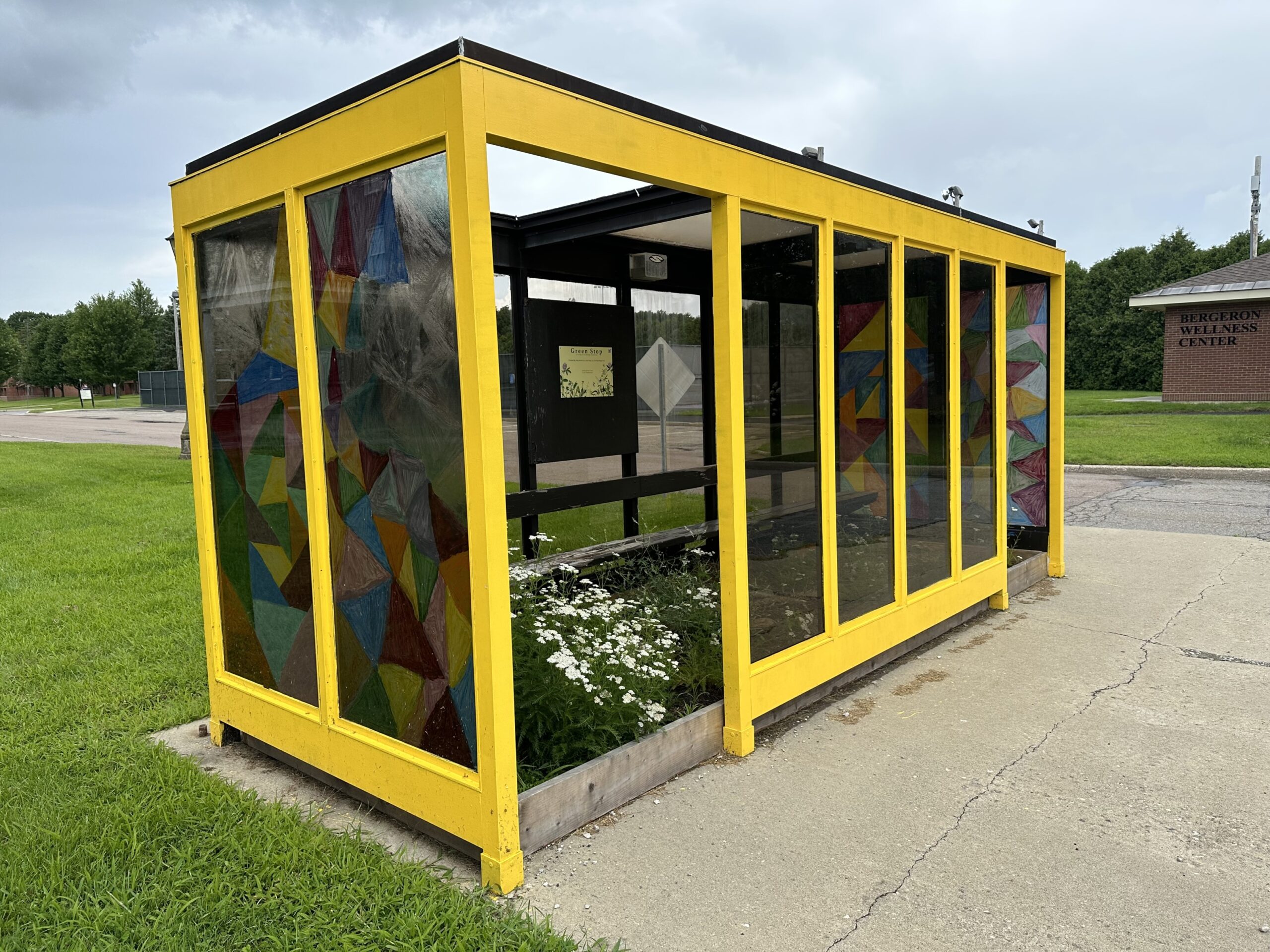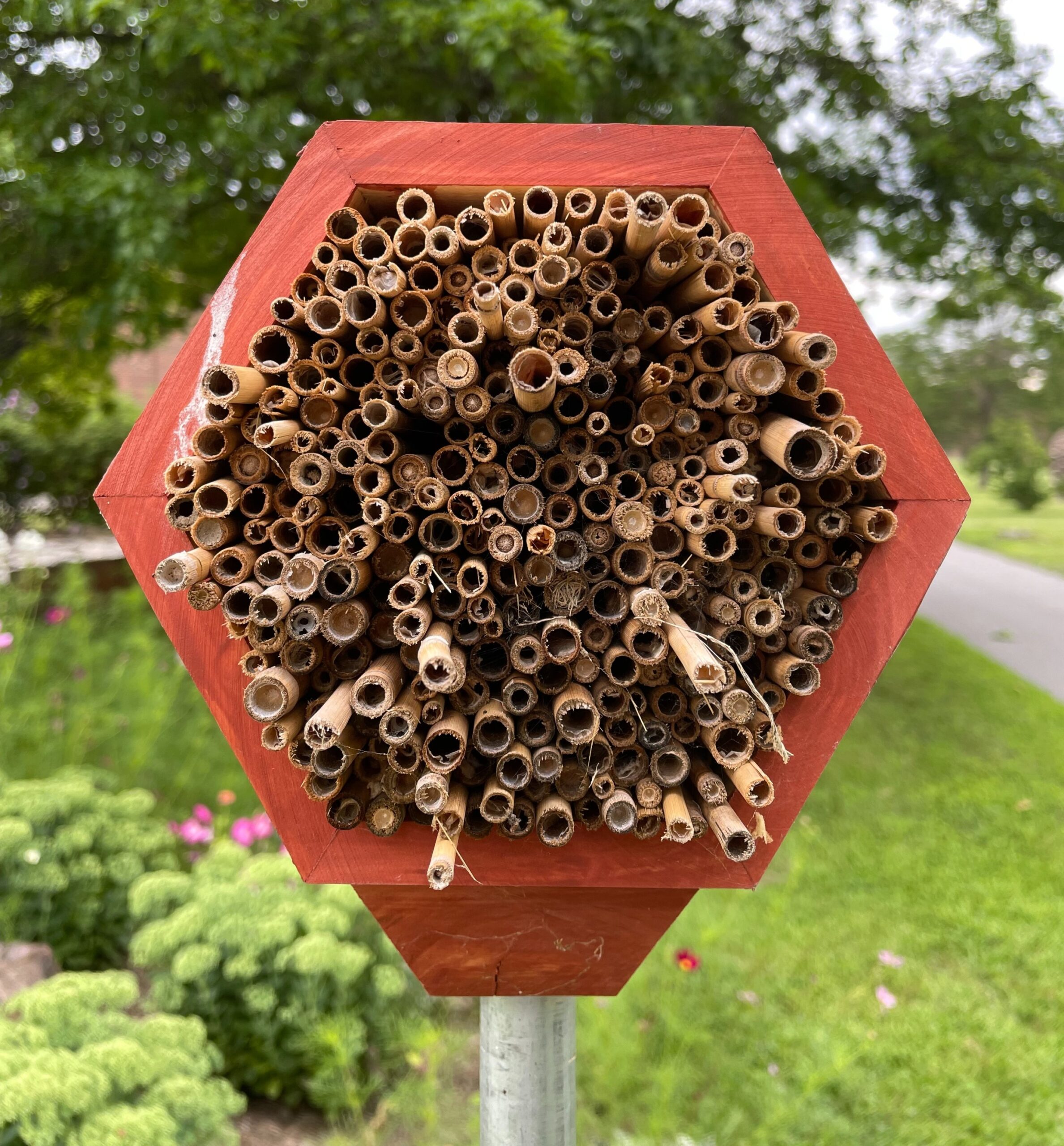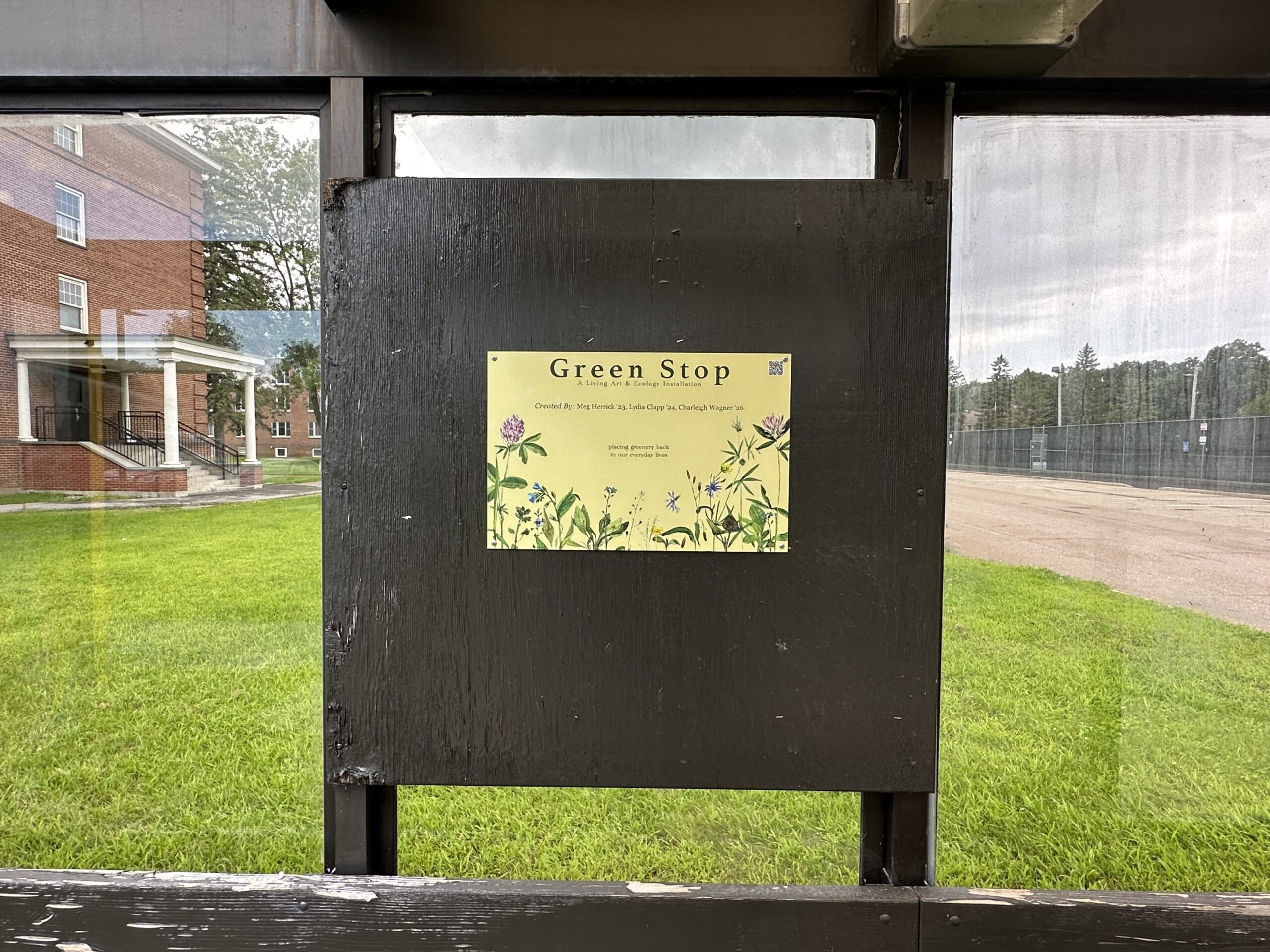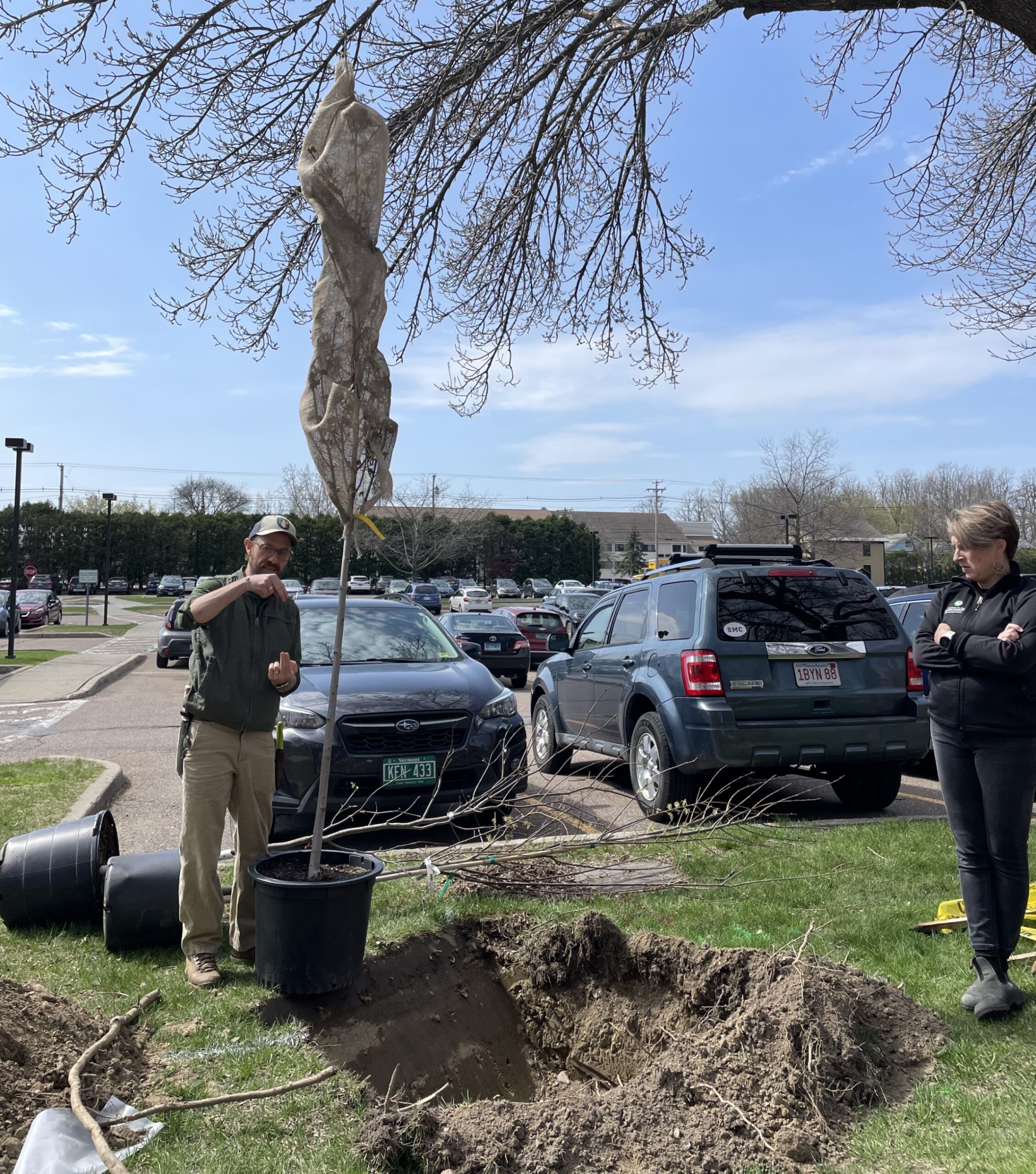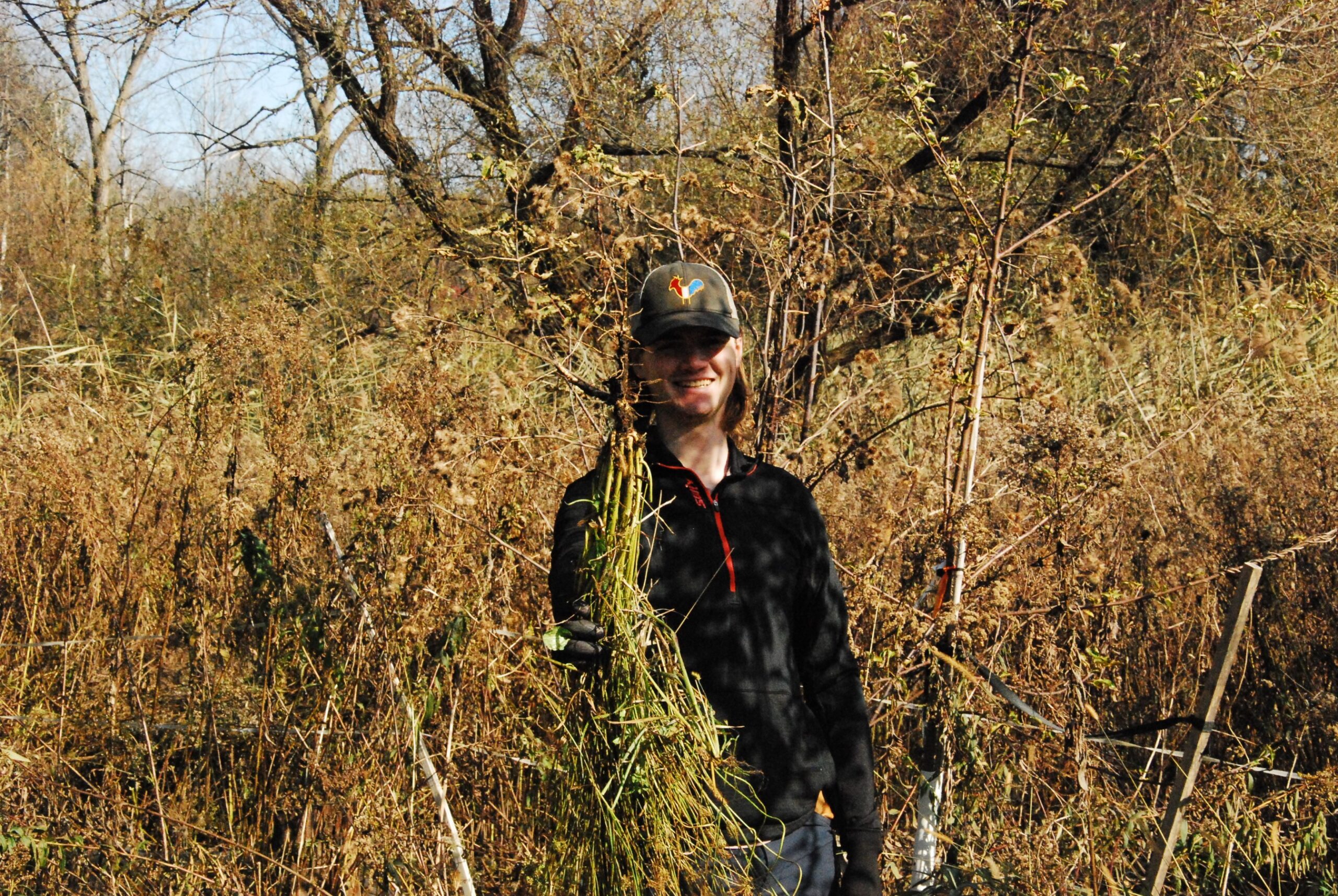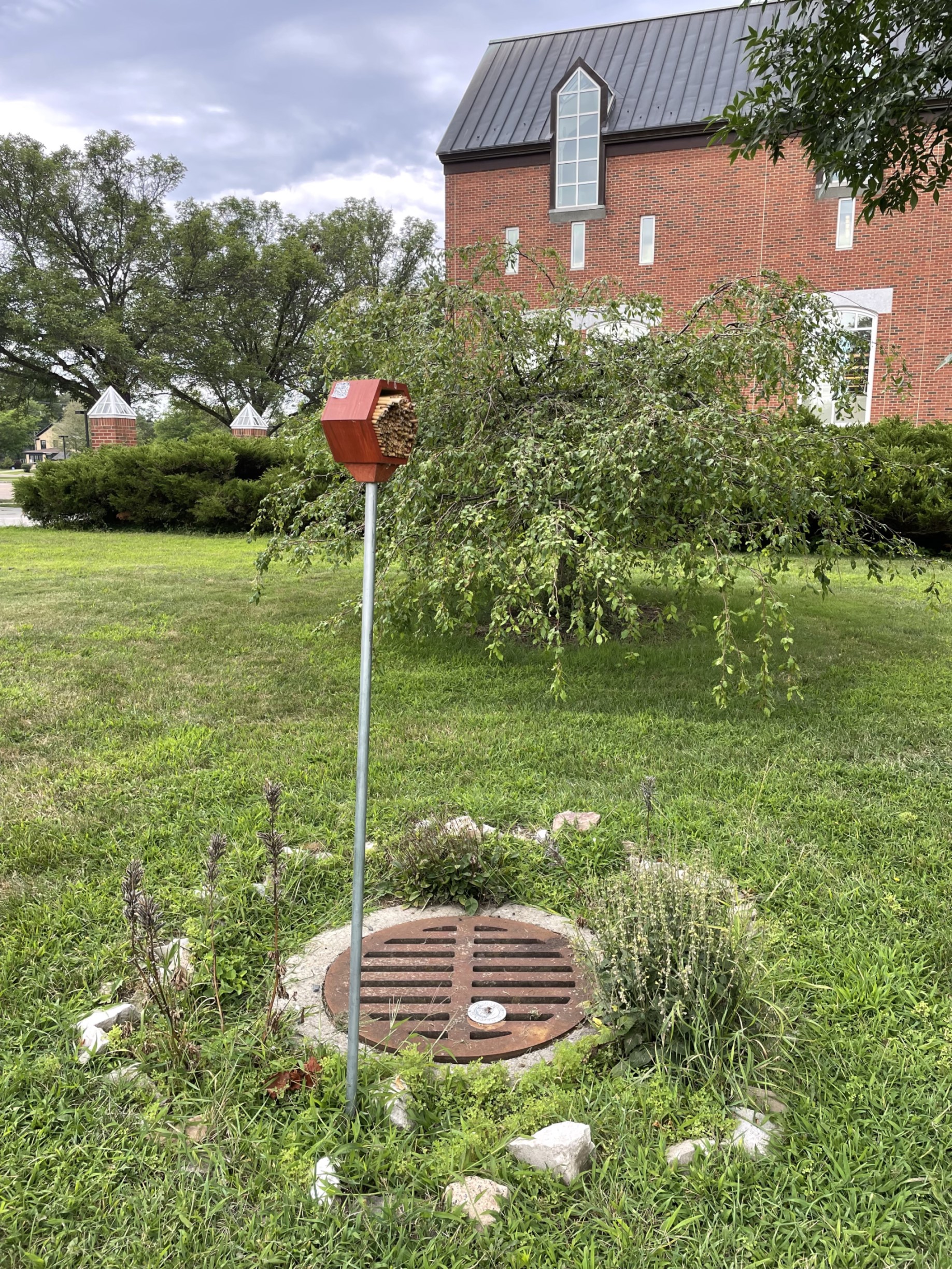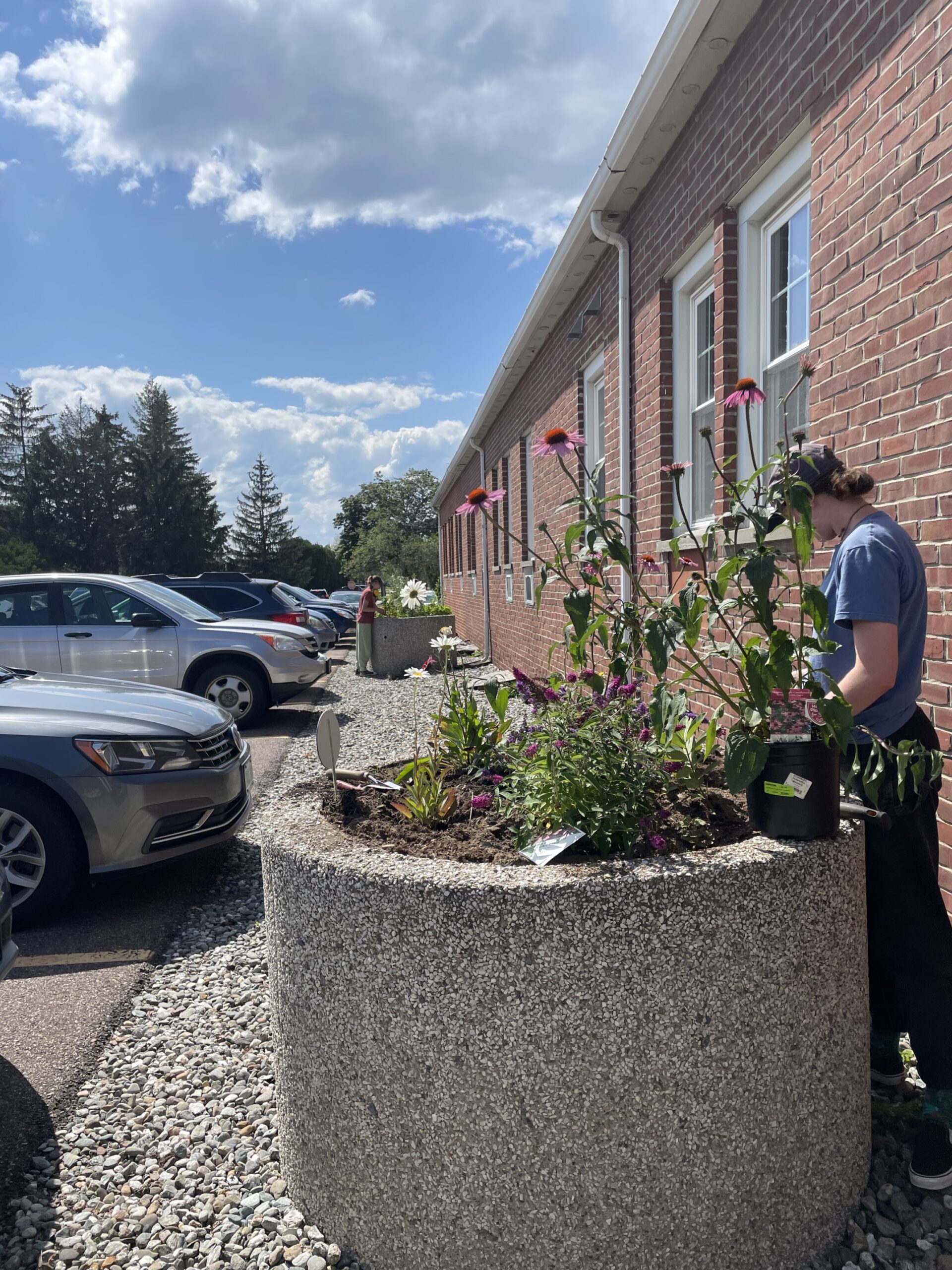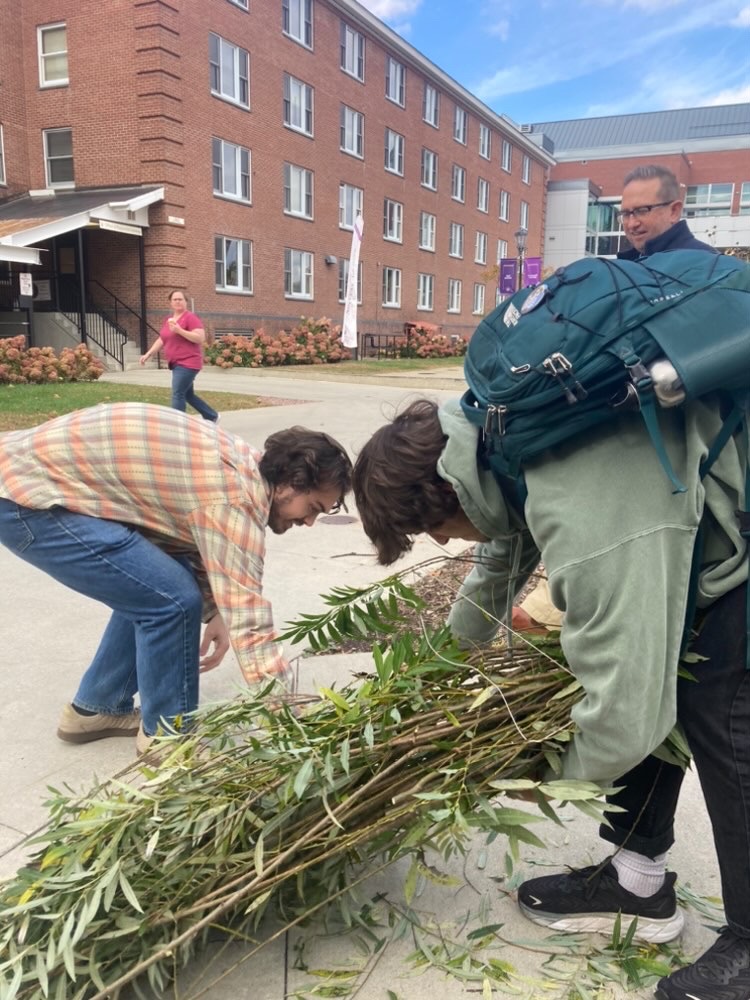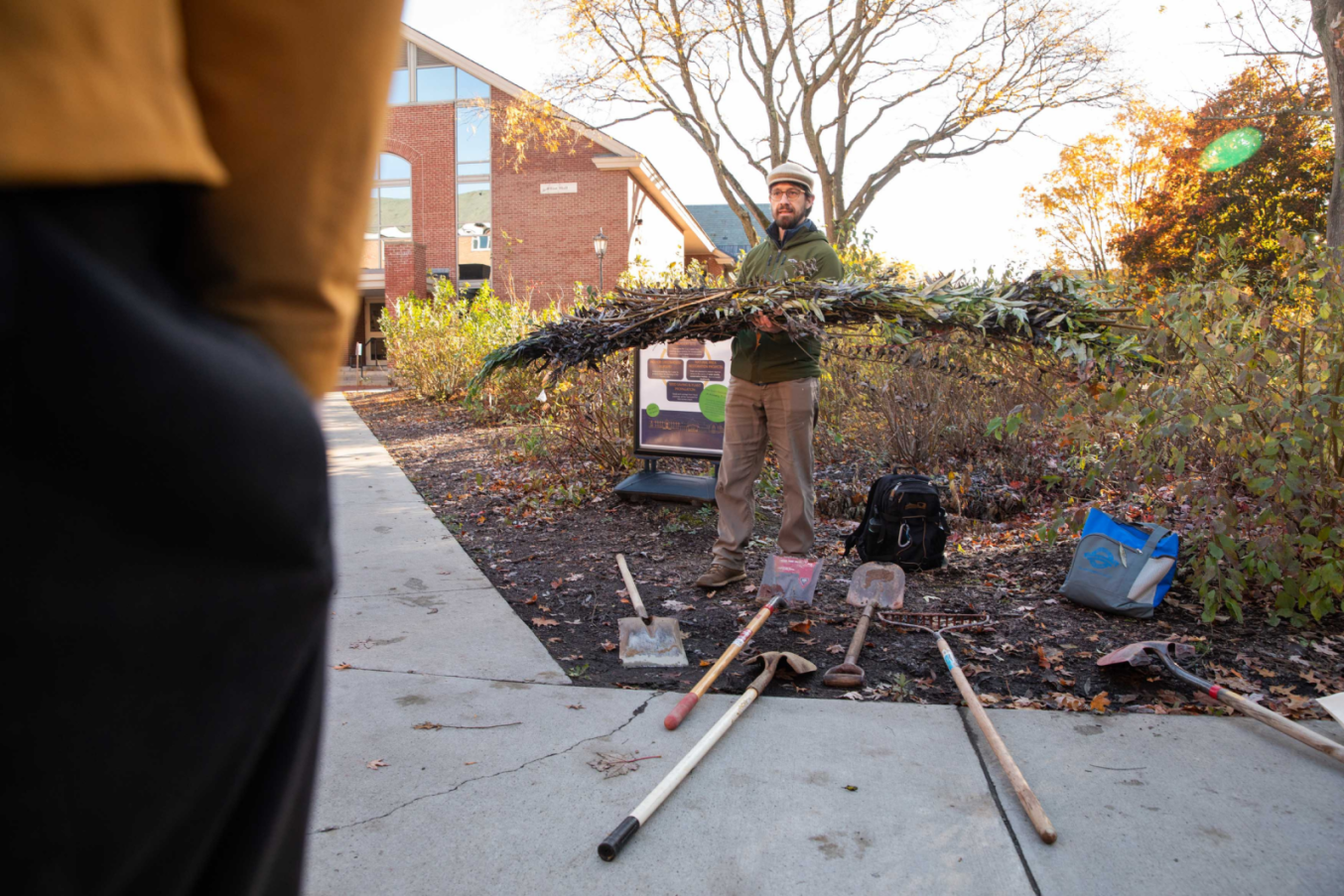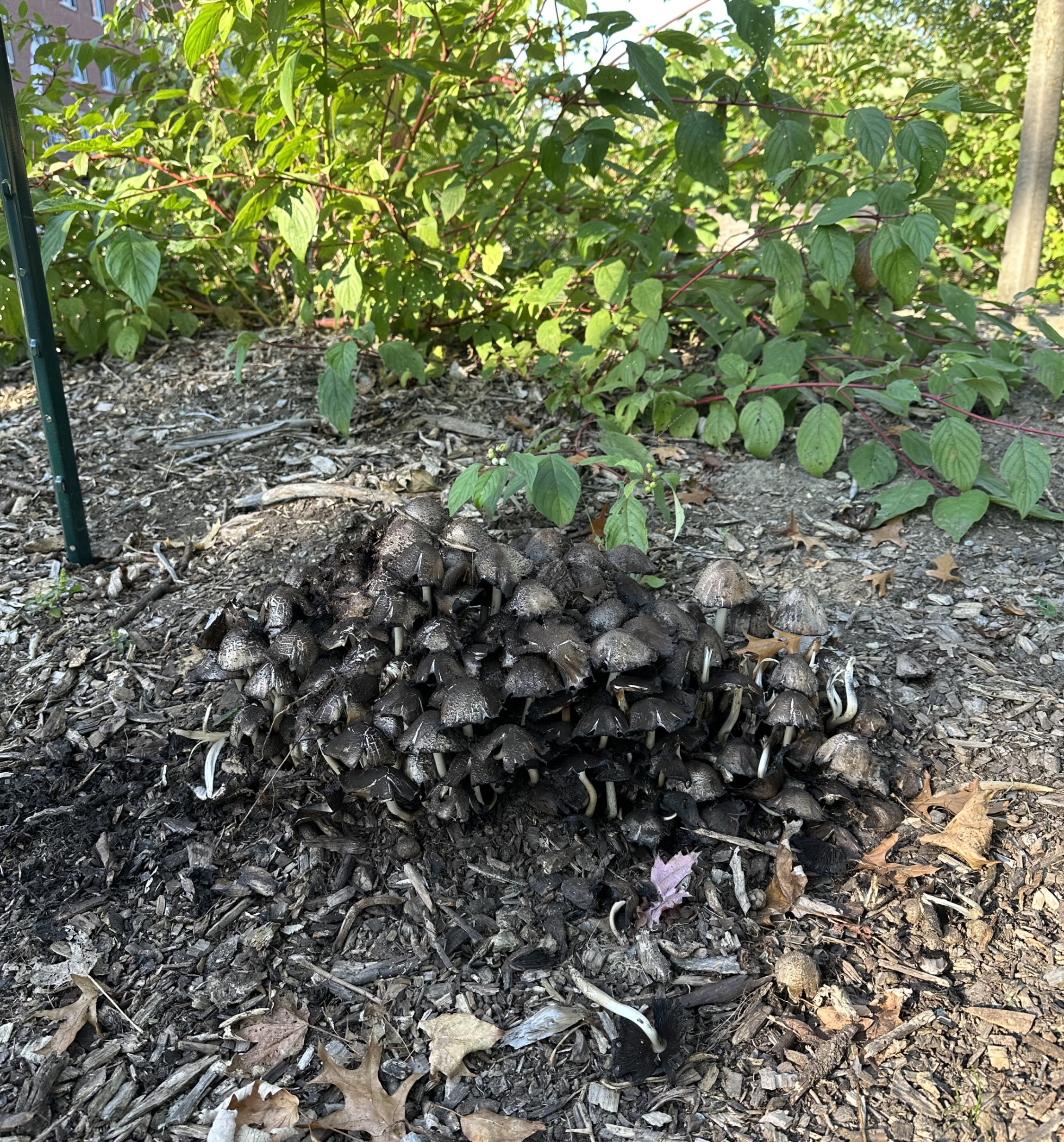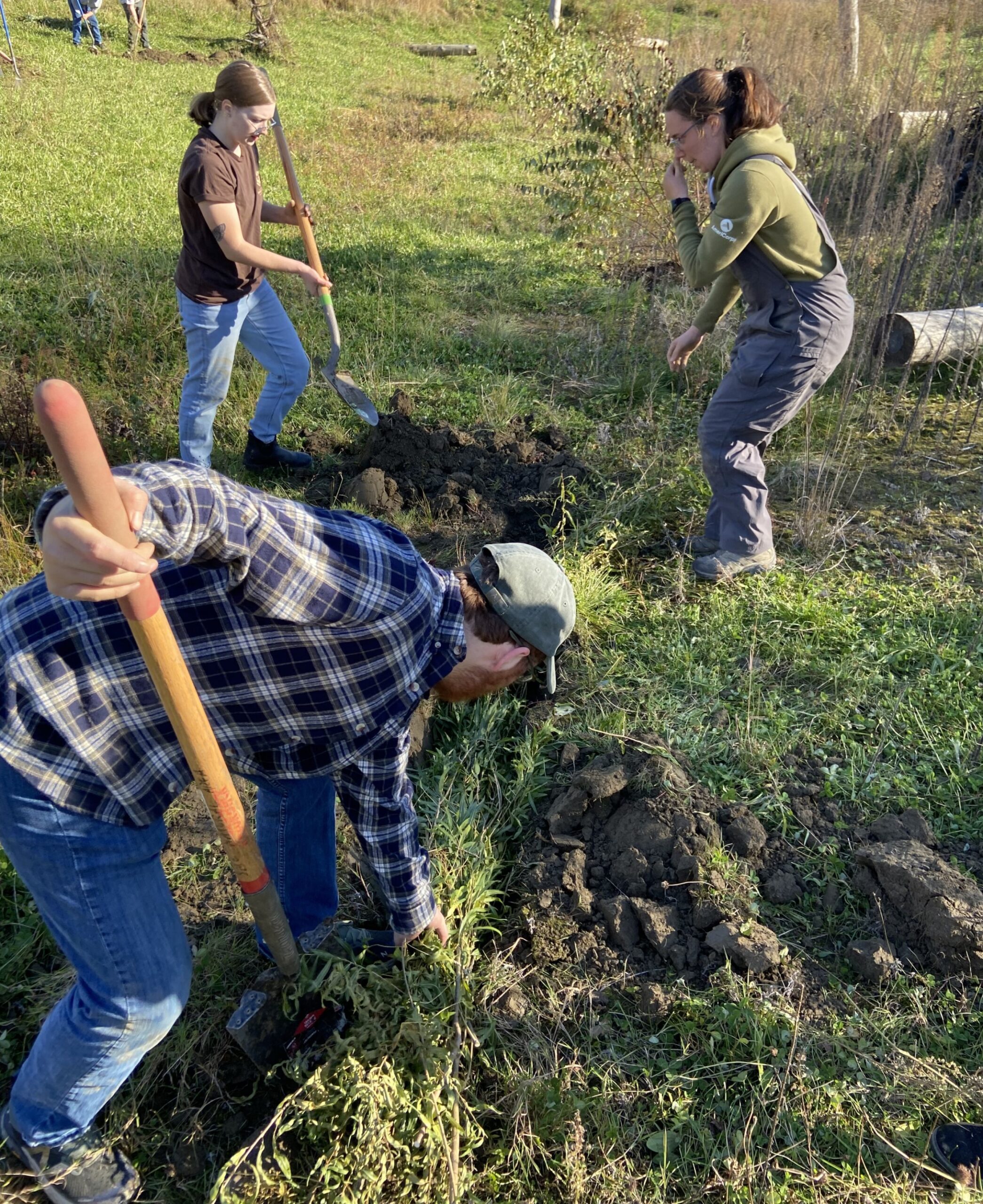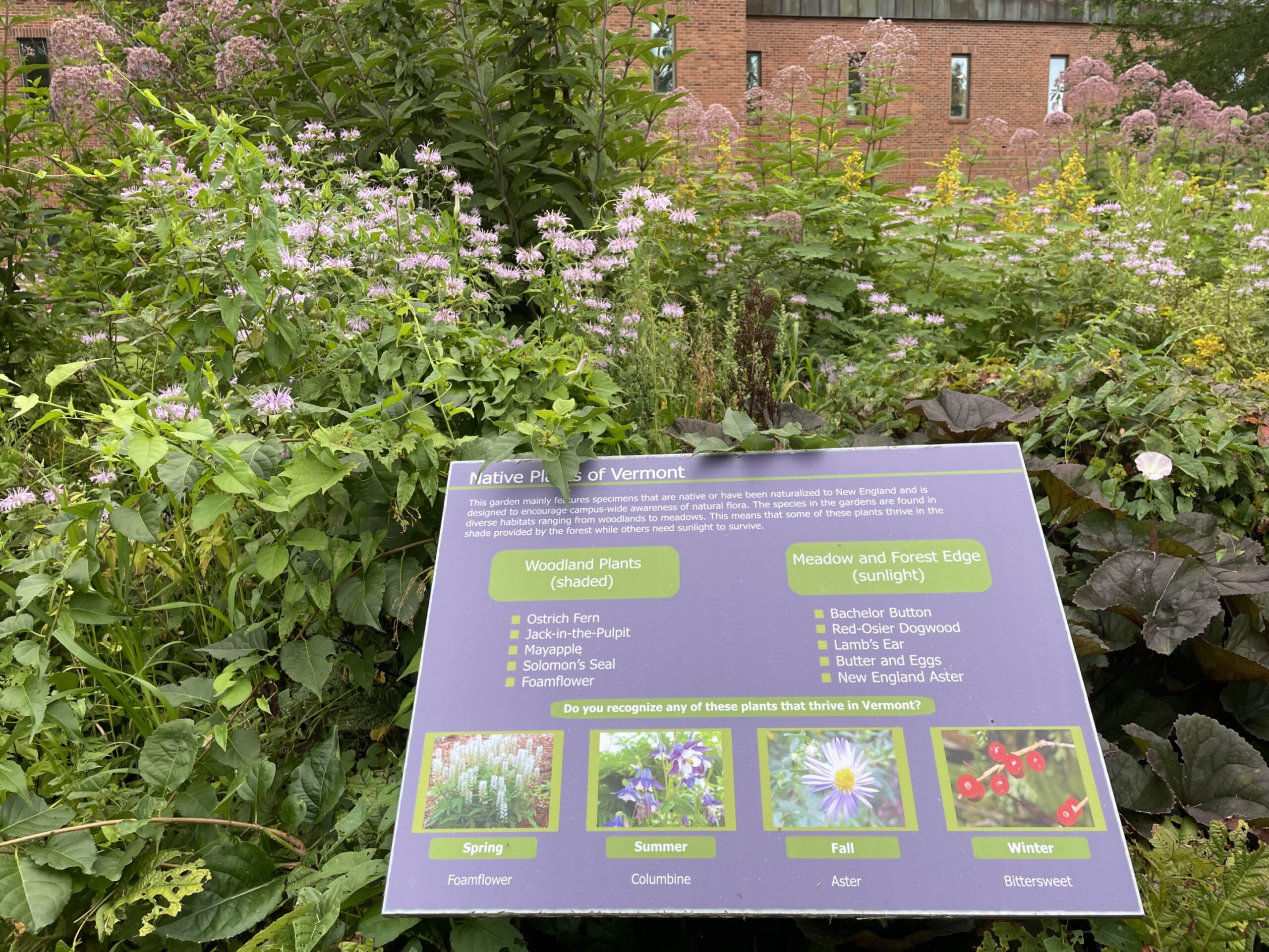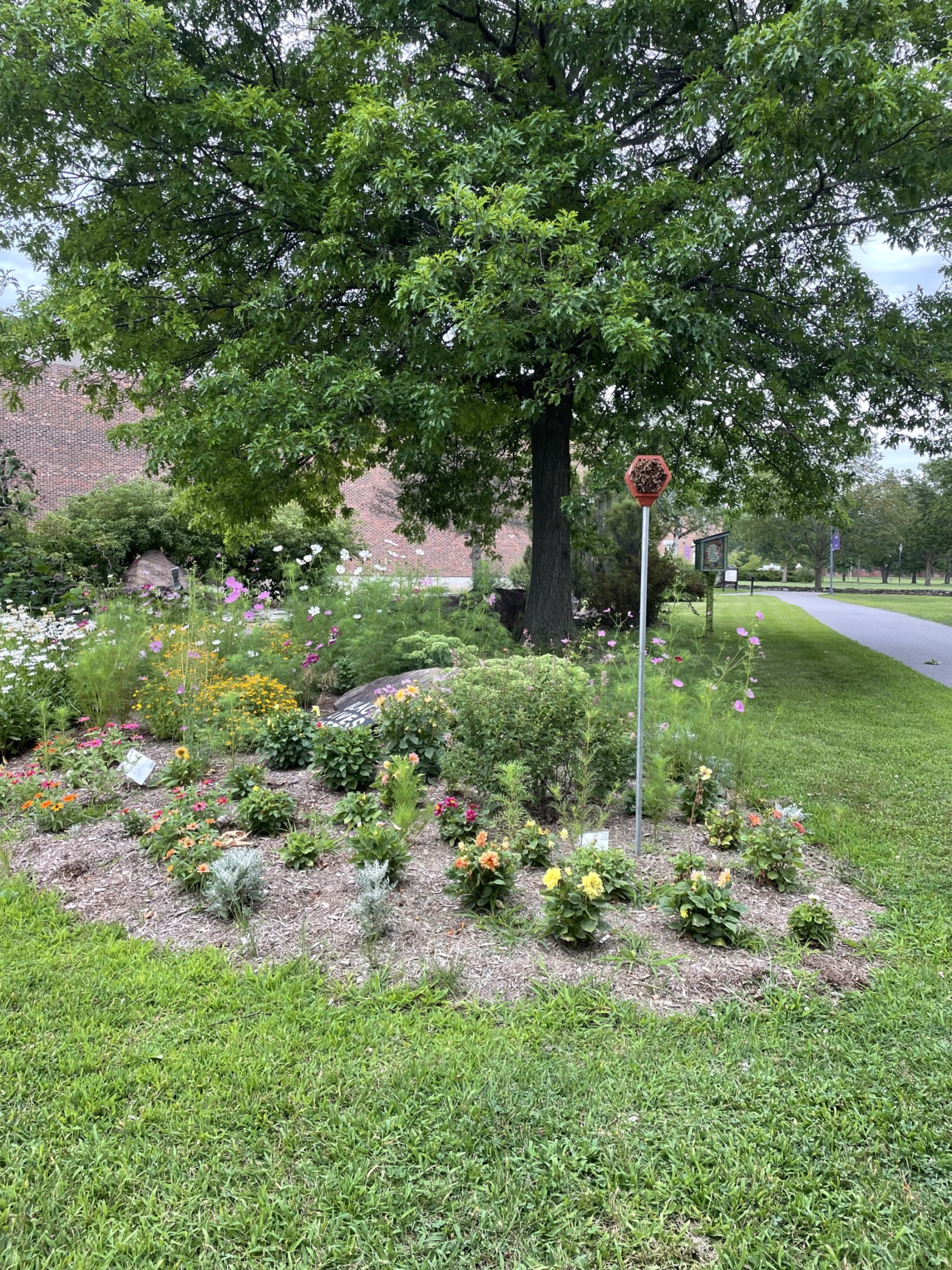Ecological Restoration
Saint Michael’s College owns more than 400 acres of land within the Lake Champlain Watershed. We recognize that the institution’s decisions have real impacts on not only our own land, but the land throughout the basin. Ecological restoration on our campus is a long-term commitment of land and resources for serving the environment that feeds and heals the community. The Center strives to have all perspectives included in land use decision-making processes so that we best steward the land within our control.
Ecological restoration at St. Mike’s is more than just planting trees, using less salt in the winter, and growing native plants; it is healing and rebuilding the relationship that humans have with the natural world through developing a sense of place. Robin Wall Kimmerer stated in Braiding Sweetgrass, the 2021 FYS Common Text, “Restoration is a powerful antidote to despair. Restoration offers concrete means by which humans can once again enter into position, creative relationship with the more-than-human world, meeting responsibilities that are simultaneously material and spiritual.”
Read on to learn more about our efforts toward making ecosystems healthier for all on college-owned land.
On-Campus Initiatives
Course Projects
Ecological restoration is an interdisciplinary practice that is worked into the syllabi of many courses throughout various educational departments at St. Mike’s. Whether it be an education, biology, or art course, students can combine their interests while gaining hands-on experience with the land. Professors utilize the outdoor spaces on campus for project-based and place-based learning, enhancing students’ experiences through work outside of a traditional classroom.
Peruse the gallery below to view some of our ecological restoration projects led by courses.
Where We Steward Ecological Restoration on Campus
The SMC Natural Area constitutes 340 acres of college-owned land. As evidenced by historic aerial photography, this area of silver maple-ostrich fern floodplain forest has been farmed for more than six decades. Restoration efforts began in the fall of 2017; the following year, the college partnered with the NRCS (Natural Resource Conservation Service) to create an agricultural conservation easement on the land to support the educational, research, recreational, and athletic missions of the college.
The Natural Area has become the main living laboratory for restoration efforts on campus. Trees and cuttings from local nurseries such as Horsford Gardens and Nursery, the Intervale Conservation Nursery, Branch Out Burlington, and even our own SMC Tree Nursery are transplanted to the Natural Area to assist with the return of biodiversity and population balance. Further work with the NRCS has led to partial reconstruction of historic wetland depressions in the lower fields of the Natural Area to increase the ecosystem’s ability to hold water, ultimately protecting the college and those downstream from worsened flooding.
Read more about the Natural Area.


The permanent site for the SMC Farm, behind Pomerleau Alumni Center and the Observatory, was designed using permaculture principles and is managed using agroecological principles that strive to model best practices in agriculture today. The land was previously used in the 1980s to grow food in the Hunger Gardens and as a tree nursery for many of the trees you see around campus today. Now, it is home to four low-till vegetable plots, two hoop houses that create 2500 square feet of covered growing space to extend the season, an orchard with an edible hedge, and dedicated pollinator spaces.
No pesticides or herbicides are used on the Farm; instead, the presence of bird- and insect-friendly plants increases predation of common pests. Crops are rotated annually–with one field plot always “resting”–to allow the soil to maintain sufficient nutrient levels to sustain growth for years to come. Ecological restoration is an active process on the Farm, as classes and volunteers learn while visiting and working in the space.
Read more about the Farm.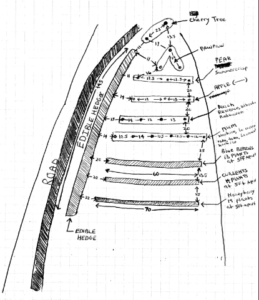

The Teaching Gardens is a garden space located in the area between St. Edmund’s Hall, Klein Hall, and the McCarthy Arts Center. Established in 2005 by Professors Valerie Bang-Jensen and Mark Lubkowitz, it is a collection of four, smaller gardens: Books in Bloom garden, Word garden, Native Plants of Vermont garden, and the International garden. Because of the variety of plants, flowers, and trees in these gardens, it is a hot spot for biodiversity in an otherwise hardscaped area of main campus. Pollinators, small mammals, birds, and insects thrive in this space alongside the community using the space for education or recreation.
Read more about the Teaching Gardens.
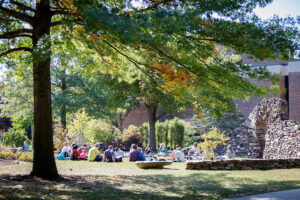
Located between Alliot Student Center, Joyce Hall, and Dion Student Center, the Pollinator Gardens is a small space founded by Green Up and co-managed by Green Up, the Institute for the Environment, and students in Professor Collier’s ES/AR-332: Art & Ecology course. The garden was planted in 2021 with native, perennial plants that support native pollinators such as bees, butterflies, moths, and birds by providing food and shelter.
The Pollinator Gardens are vibrant with native flowers such as Yarrow, Bee balm, Purple coneflower, Joe pye-weed, Milkweed, and many more throughout the spring, summer, and fall. In the winter, we tie the dead stems up instead of chopping them down to allow insects and pollinators to overwinter and find food in the early spring.

The Tree Nursery was planted in the fall of 2019, as one of the programs initiated to launch the Institute for the Environment that year. The Institute for the Environment, Green Up, and the Environmental Studies program worked together to transform a central and heavily-trafficked space between Alliot Student Center, Joyce Hall, and Dion Student Center from monoculture lawn into a native tree nursery. Native trees, such as Dogwood and Black willow, are grown in this space until they are mature enough to be or cut and tied into fascines or transplanted to the SMC Natural Area.

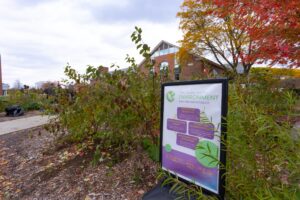
The Food Forest can be found in the SMC Natural Area. Created in May of 2022 by a determined student, Anna Beach ’22, with the help of Professor Trevien Stanger, the Facilities team, and volunteers from MOVE, the Food Forest is an area of diverse planting of edible plants that mimic the ecosystems and patterns found in nature. The purpose of the SMC Food Forest is to enhance biodiversity and ecological processes, to cultivate a sense of place and an expanded sense of community, and to demonstrate how reciprocity with the natural world can help meet community needs. Apples, pears, plums, and perennial companion plants are slowly maturing over the years and will eventually produce food to help feed the SMC community.

Certifications
AASHE STARS Program
The STARS program is a transparent, self-reporting framework for colleges and universities to measure their sustainability performance. Saint Michael’s College has been awarded a Silver rating from the STARS program, of which many points are a result of the campus-wide changes to creating healthier and resilient ecosystems. To view our current and past STARS reports, visit the STARS website. You can also visit our Sustainability page which goes more into depth about our STARS reports.
Tree Campus USA
Since 2021, Saint Michael’s College has received the annual Tree Campus Higher Education recognition for the ways in which the college manages tree cover on campus. There are five standards required to receive recognition:
- Establishment of a campus tree advisory committee
- Evidence of a campus tree care plan
- Verification of the plan’s dedicated annual expenditures
- Observing Arbor Day
- Creating a service-learning project aimed at engaging the student body
If you are interested in serving on the Tree Campus Committee as a student representative, please contact Declan McCabe: dmccabe@smcvt.edu.

Bee Campus USA
Saint Michael’s College has been recognized for the last 8 years by the Xerces Society for Invertebrate Conservation as a Bee Campus. A college or university can be recognized as a Bee Campus by committing to conserve native pollinators by increasing the abundance of native plants, providing nest sites, and reducing the use of pesticides.
The Teaching Gardens, the Tree Nursery, the Pollinator Gardens, and our No-Mow areas scattered throughout campus are outdoor spaces that the campus has set aside and manages for pollinator habitat and food. The Center works closely with the grounds crew to help manage the landscape of the college in numerous ways. One of these ways is simple: Raise the mower blades so the grass is slightly longer to provide more habitat for insects and pollinators. Another way is even simpler: Don’t mow at all! Throughout campus, there are designated “No-Mow” areas to allow the ecosystem to naturally regenerate itself over time. Not only does this improve ecosystem health, it means less fuel, time, and effort is spent mowing down beneficial plants.
Interested in getting involved? Volunteer with Green Up club to help clean up the gardens, or take ES-332: Art & Ecology to learn about and maintain our campus bee houses!
Saint Kateri Habitat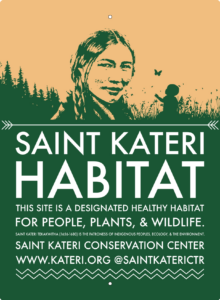
The SMC Natural Area is a dedicated Saint Kateri Habitat, which are spaces that aim to encourage landowners to manage their land in ways that serve the environment, themselves, and their religion. Kateri Tekakwitha was the first Native American to be recognized as a saint in the Catholic Church and is known as the patron saint of ecology and the environment. The restoration of the landscape and placemaking activities stewarded by the SMC community allows for the Natural Area to become a place that meets the physical and spiritual needs of every living being that visits. Visit the Saint Kateri Conservation Center to learn more about Saint Kateri Habitats and the history of Kateri Tekakwitha.
